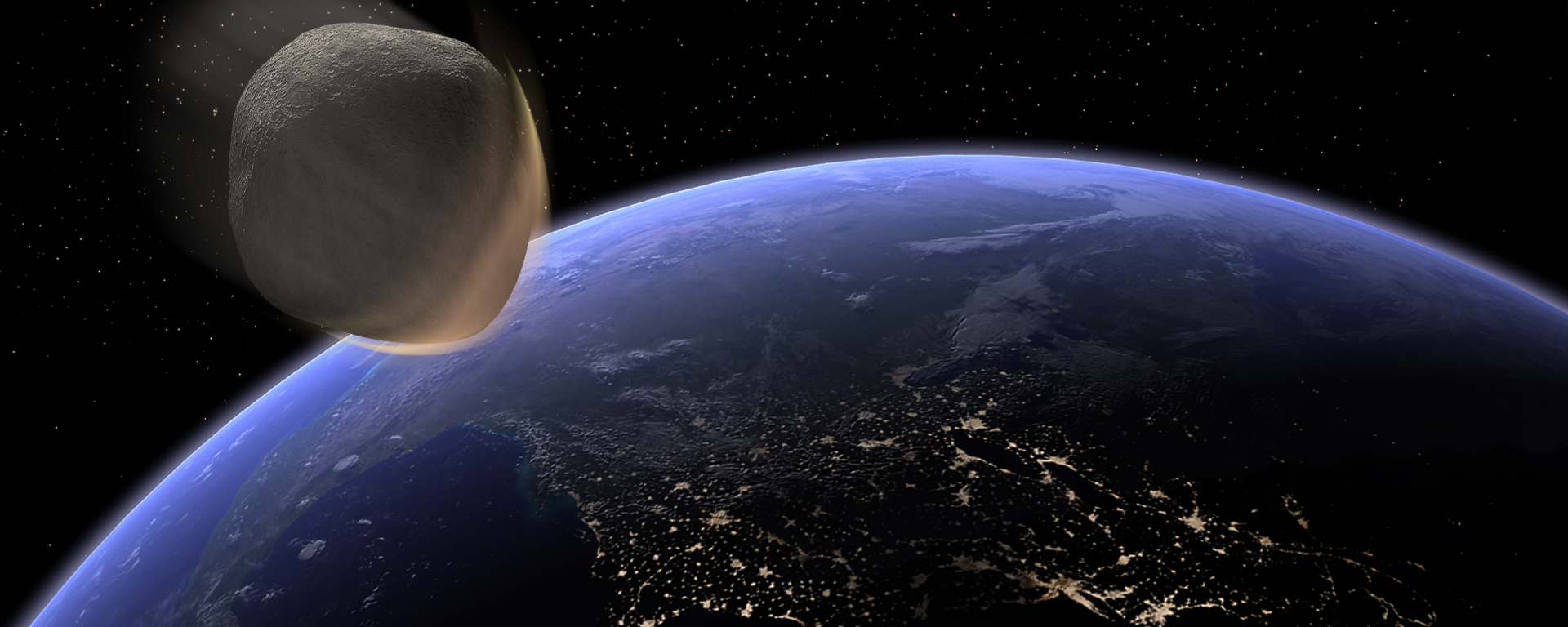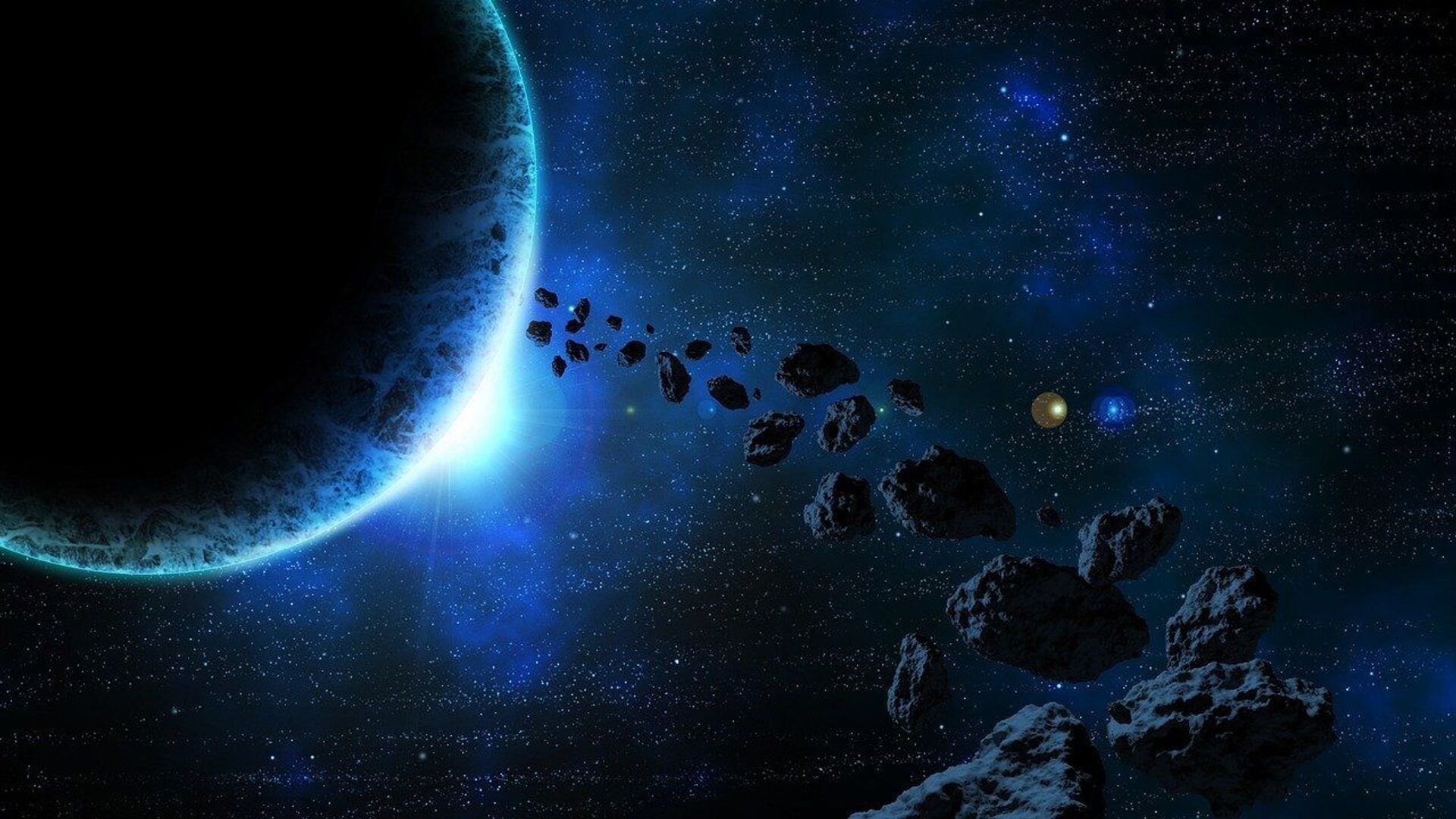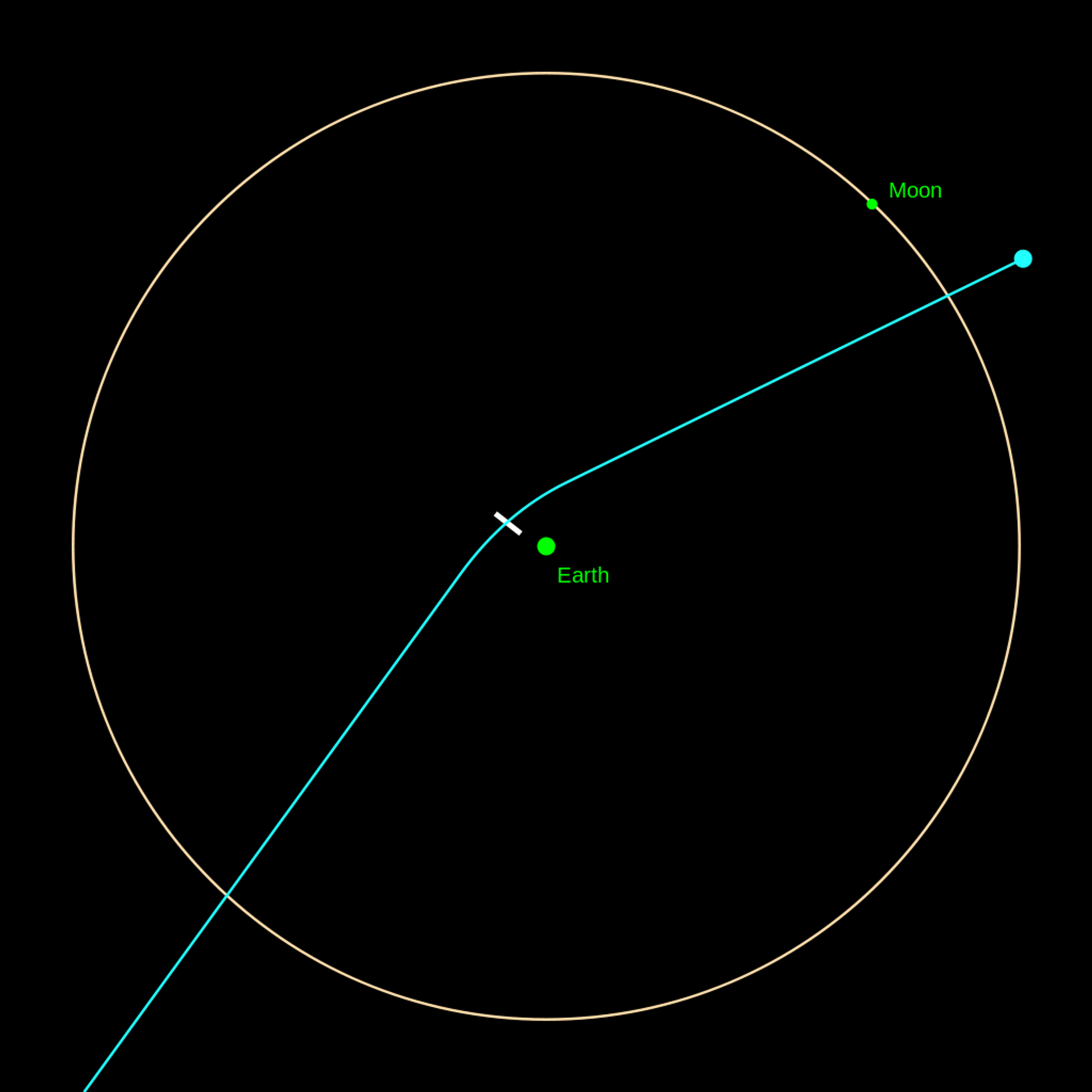https://sputnikglobe.com/20220226/asteroid-taller-than-dubai-skyscraper-wider-than-the-vatican-to-skim-past-earth-1093387124.html
Asteroid 'Taller Than Dubai Skyscraper, Wider than The Vatican' to Skim Past Earth
Asteroid 'Taller Than Dubai Skyscraper, Wider than The Vatican' to Skim Past Earth
Sputnik International
NASA had earlier warned that a kilometre-plus wide, potentially hazardous asteroid would be passing near Earth in early March. The agency’s Jet Propulsion... 26.02.2022, Sputnik International
2022-02-26T07:57+0000
2022-02-26T07:57+0000
2022-02-26T07:57+0000
asteroid
nasa
https://cdn1.img.sputnikglobe.com/img/107937/47/1079374797_0:0:1280:720_1920x0_80_0_0_8b21e997d134b65eb9cece962c4244a7.jpg
An asteroid longer than the 830-metre Burj Khalifa skyscraper in Dubai is tall and wider than Vatican City (around 1.05 kilometres) is hurtling towards our planet Earth.Designated 138971 (2001 CB21), it is to skim past our planet on 4 March, according to tracking data from the Center for Near Earth Object Studies at NASA’s Jet Propulsion Laboratory (JPL).The space rock, estimated to be between 560 meters to 1.2 kilometres wide and designated as “potentially hazardous,” is of sufficient size to trigger concerns.Astronomers classify certain near-Earth asteroids as "Potentially Hazardous Asteroids" or PHAs. These rocky objects revolving around the sun come within about 4.65 million miles (7.48 million kilometres) of Earth's orbit and are larger than 500 feet (140 metres) across, according to NASA's Center for Near-Earth Object Studies (CNEOS). However, this classification does not necessarily imply that the asteroid in question poses a specific threat to Earth.In the case of 138971 (2001 CB21), according to NASA, the asteroid is set to pass by Earth at a distance of around 4.9 million kilometres – close, but still much farther than the Moon, which orbits our planet at a distance of approximately 384,000 kilometres.If an asteroid over 140 meters in diameter were to impact Earth, according to research from the Davidson Institute of Science at Israel's Weizmann Institute of Science, the amount of energy released would be at least a thousand times greater than that released by the first atomic bomb.If the space visitor were even larger – say, 340 metres wide, (1,120 feet) and on track to pass within just 19,000 miles (31,000 km) of our planet like the asteroid Apophis – it could destroy an entire continent.First discovered on 19 June 2004, Asteroid 99942 Apophis is to fly past Earth on 13 April 2029 at a distance closer than most geostationary satellites.The asteroid has been on top of the European Space Agency's "impact risk list" of PHAs and NASA's Sentry Risk Table for 17 years.Back in 2004, visual observations left researchers worrying that there was around a 2.7% chance that the PHA would hit Earth in 2029. However, subsequent radar observations combined with precise orbit analysis have helped astronomers conclude that there is no risk of Apophis impacting our planet for at least a century.However, according to Gareth Collins, a professor in the Department of Earth Science & Engineering at Imperial College London, United Kingdom, were Apophis to strike Earth at 45,000 mph (20 kilometres per second), the energy released would be “equivalent to the explosive yield of the global nuclear arsenal"."About 100,000 times more than the energy of the Chelyabinsk meteor and a million times more energy than the bombs dropped on Hiroshima," he added.
https://sputnikglobe.com/20220216/giant-potentially-hazardous-asteroid-to-make-its-closest-approach-to-earth-in-century-1093071428.html
https://sputnikglobe.com/20220102/asteroid-apophis-predicted-to-skim-dangerously-close-to-earth-in-2029--1091976054.html
Sputnik International
feedback@sputniknews.com
+74956456601
MIA „Rossiya Segodnya“
2022
News
en_EN
Sputnik International
feedback@sputniknews.com
+74956456601
MIA „Rossiya Segodnya“
Sputnik International
feedback@sputniknews.com
+74956456601
MIA „Rossiya Segodnya“
asteroid, nasa
Asteroid 'Taller Than Dubai Skyscraper, Wider than The Vatican' to Skim Past Earth
NASA had earlier warned that a kilometre-plus wide, potentially hazardous asteroid would be passing near Earth in early March. The agency’s Jet Propulsion Laboratory (JPL) considers any asteroid of at least 150 metres in diameter passing within 7.5 million kilometres of Earth to be potentially hazardous.
An
asteroid longer than the 830-metre Burj Khalifa skyscraper in Dubai is tall and wider than Vatican City (around 1.05 kilometres) is hurtling towards our planet Earth.
Designated 138971 (2001 CB21), it is to skim past our planet on 4 March, according to tracking data from the Center for Near Earth Object Studies at NASA’s Jet Propulsion Laboratory (JPL).
The space rock, estimated to be between 560 meters to 1.2 kilometres wide and designated as “potentially hazardous,” is of sufficient size to trigger concerns.

16 February 2022, 08:57 GMT
Astronomers classify certain near-Earth asteroids as "Potentially Hazardous Asteroids" or PHAs. These rocky objects revolving around the sun come within about 4.65 million miles (7.48 million kilometres) of Earth's orbit and are larger than 500 feet (140 metres) across, according to NASA's Center for Near-Earth Object Studies (CNEOS). However, this classification does not necessarily imply that the asteroid in question poses a specific threat to Earth.
In the case of 138971 (2001 CB21), according to NASA, the asteroid is set to pass by Earth at a distance of around 4.9 million kilometres – close, but still much farther than the Moon, which orbits our planet at a distance of approximately 384,000 kilometres.
If an asteroid over 140 meters in diameter were to impact Earth, according to research from the Davidson Institute of Science at Israel's Weizmann Institute of Science, the amount of energy released would be at least a thousand times greater than that released by the first atomic bomb.
If the space visitor were even larger – say, 340 metres wide, (1,120 feet) and on track to pass within just 19,000 miles (31,000 km) of our planet like the
asteroid Apophis – it could destroy an entire continent.
First discovered on 19 June 2004, Asteroid 99942 Apophis is to fly past Earth on 13 April 2029 at a distance closer than most geostationary satellites.
The asteroid has been on top of the European Space Agency's "impact risk list" of PHAs and NASA's Sentry Risk Table for 17 years.

2 January 2022, 10:59 GMT
Back in 2004, visual observations left researchers worrying that there was around a 2.7% chance that the PHA would hit Earth in 2029. However, subsequent radar observations combined with precise orbit analysis have helped astronomers
conclude that there is no risk of Apophis impacting our planet for at least a century.
However, according to Gareth Collins, a professor in the Department of Earth Science & Engineering at Imperial College London, United Kingdom, were Apophis to strike Earth at 45,000 mph (20 kilometres per second), the energy released would be “equivalent to the explosive yield of the global nuclear arsenal".
"About 100,000 times more than the energy of the Chelyabinsk meteor and a million times more energy than the bombs dropped on Hiroshima," he added.




